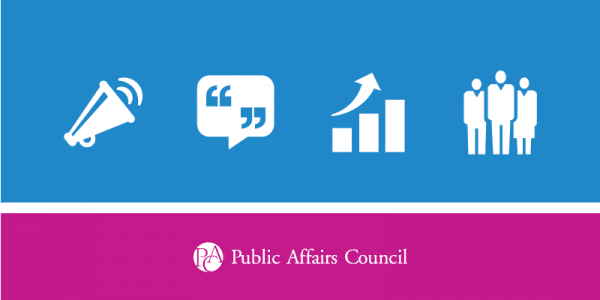Four Big Trends in Digital Public Affairs and Advocacy
May 2016
Public affairs is a multi-faceted function where lobbyists, grassroots advocacy specialists, policy experts, political involvement specialists and communications professionals coordinate their activities to achieve advocacy success. And today, organizations who want to increase their effectiveness are focusing their efforts on digital public affairs and digital advocacy, an arena where online tools and digital communications are used to build grassroots support or influence policy.
Where is digital public affairs headed?
Here are the top trends in this growing advocacy space:
Visual Storytelling
Social Media for Government Relations and Thought Leadership
Data-Driven Advocacy
Online Reputation Management
Conveying your public affairs and policy messages can be difficult in an age of short attention spans and a segmented media landscape. However, successful use of visual storytelling can help your organization break through the noise in a crowded public policy environment. The use of compelling

Check out great examples of visual storytelling by visiting the Public Affairs Trend Lab, a portal launched recently by the Foundation for Public Affairs.
Social Media for Government Relations and Thought Leadership
While social media has been readily adopted by marketers, public affairs professionals have been slower to harness social’s power for advocacy purposes. Using social media for public affairs can be challenging but rewarding if done properly.
Often, public affairs professionals are wedded to and want to control every aspect of their message, but if they can overcome this challenge and can create engaging social content, they can help their organization reach influential audiences, such as policymakers, reporters, grassroots supporters and other online stakeholders.
Many organizations also use social media to elevate their policy expertise around an issue as to be seen as thought leaders on a particular topic. Organizations are building out their online social influence to ensure that reporters, academics and policymakers reach out to them first when working with policy issues important to the organization. Companies like UPS, Home Depot and Microsoft have used separate Twitter handles successfully to increase engagement and awareness around their advocacy work.
These days, professionals in nearly every industry know the term “big data,” but using data to inform 
Organizations use data to find potential advocates, increase advocacy action rates, target particular lawmakers and help move their advocates up the engagement ladder. These practices will continue to increase in importance as organizations collect more digital data and as software platforms become more sophisticated at automatically optimizing tasks based on data collected. This might include email A/B testing of subject lines or even more advanced optimization techniques that adjust email send times based on individual preference.
Your online reputation is a key component in how almost every single influencer, policymaker, reporter or concerned citizen views your organization. Whether you work for a trade or professional association responsible for protecting an industry’s status or you work for a corporation and are responsible for protecting your corporate image, online reputation management should be a major focus for public affairs professionals.
Your organization’s online reputation is affected by online news stories that may mention your company, association or policy issue, but also by social media mentions, blogs, Wikipedia pages, consumer review webpages and anything else that will show up in a search engine results page. In times of crisis or after getting negative press, people turn to the Internet for additional information before they form an opinion or take an action. A 2015 Google consumer survey asked, “If an organization had negative press, how would you find out more information?” Over two-thirds (67%) of respondents said they would turn to the Internet.
Organizations are responding to this trend by improving their search engine optimization and marketing, building a base of online supporters, and creating a rapid digital response plan. Organizations who do the latter are often actively developing “dark sites” and empowering social media managers to respond to tweets to comments without approval during crises.

